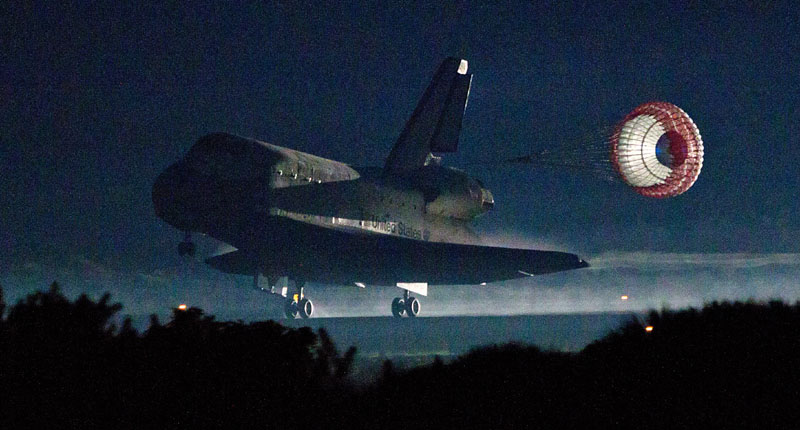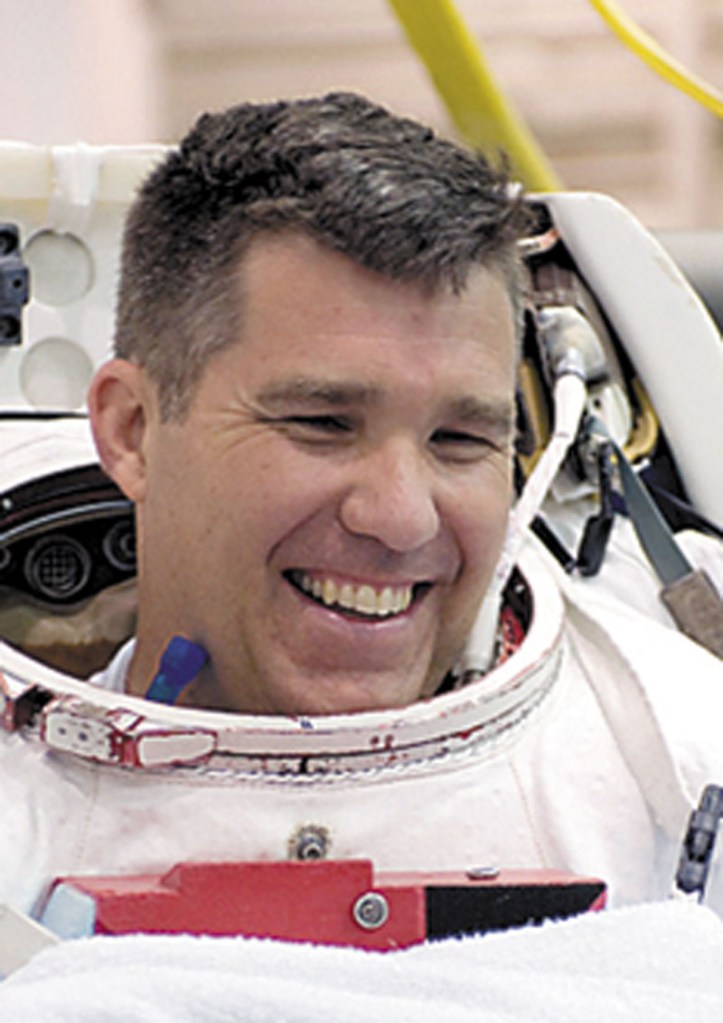Astronaut Stephen Bowen watched on TV early Thursday morning as Atlantis landed, signaling an end to NASA’s 30-year space shuttle program.
Bowen, 47, felt a mixture of emotions as the shuttle touched down at 5:57 a.m. at the Kennedy Space Center in Cape Canaveral, Fla.
The space-walking NASA astronaut is the father Gillian Bowen, a former student of Maine Central Institute in Pittsfield and of the Bossov Ballet Theater at the school. Because of that local connection, he has spoken to audiences in Pittsfield and Waterville in recent years soon after completing space missions.
In one sense, Bowen said the end of the shuttle program is heartbreaking, because the country is losing a generation of technically skilled space engineers and because he knows some of the thousands who will lose their jobs. But the program’s ending also opens up “an exciting and interesting time” in space exploration, he said.
“This has been known; this has been coming for years now,” Bowen, a captain in the U.S. Navy, said Thursday. “These are the policies, and we got a future with commercial space — it’s exciting.”
With the space shuttles retiring to museums, it will be another three to five years at best before Americans are launched again from U.S. soil, as private companies gear up to seize the Earth-to-orbit-and-back baton from NASA. The long-term future for American space exploration is just as hazy, a huge concern for many at NASA and all those losing their jobs because of the shuttle’s end.
Asteroids and Mars are the destinations of choice, yet NASA has yet to settle on a rocket design to get astronauts there.
Born with Columbia in 1981, the shuttle was NASA’s longest-running space exploration program.
The five shuttles launched, saved and revitalized the Hubble Space Telescope; built the space station, the world’s largest orbiting structure; and opened the final frontier to women, minorities, schoolteachers, even a prince. The first American to orbit the Earth, John Glenn, became the oldest person ever in space, thanks to the shuttle. He was 77 at the time; he turned 90 this week.
Bowen first blasted off into space Nov. 14, 2008, as a member of the STS-126 Endeavour, and he spoke to MCI students about the mission a few months later. The crew’s mission was to get the International Space Station prepared to support a crew of six, instead of just three, so they delivered a new bathroom, kitchenette, bedrooms, exercise machine and food and water recycling systems.
Gillian Bowen graduated from MCI in 2009 and she dances with the nonprofit Patel Conservatory in Tampa, Fla.
Stephen Bowen’s second space mission came in May 2010, when he was aboard the STS-132 Atlantis to the International Space Station to deliver a cargo carrier, a Russian-built research module and install an antenna and replace 400-pound batteries.
He returned to speak at MCI gave back a school banner that he had brought on board the shuttle.
His third space journey came unexpectedly this past March, when he was a last-minute addition to the Discovery shuttle crew after a bicycle accident injured another astronaut. Bowen became the first astronaut to fly consecutive shuttle missions.
Bowen would like to one day return to the International Space Station.
“My Russian language skills need to improve dramatically and my robotics training needs to come up,” he said.
NASA is sacrificing the shuttles, according to the program manager, so it can get out of low-Earth orbit and get to points beyond. The first stop under Obama’s plan is an asteroid by 2025; next comes Mars in the mid-2030s. Private companies have been tapped to take over cargo hauls and astronaut rides to the space station, which is expected to carry on for at least another decade.
NASA astronauts are expected to hitch rides to the space station on Russian Soyuz spacecraft — for tens of millions of dollars per seat.
Meantime, the transition has already begun for Bowen, who is now in charge of the spacewalk branch of the astronaut office at the Lyndon B. Johnson Space Center in Houston, Texas. What’s not widely understood by the public, he said, is that there is now actually a greater demand for spacewalk training.
Previously, only shuttle astronauts who were scheduled to conduct spacewalks at the space station were trained to do so. Now, however, every single space crew member who goes to the space station will need spacewalk training in case equipment needs fixing or other issues arise.
“It’s a totally different paradigm,” Bowen said. “We need to train everyone in the office. Our actual level of training is increasing even though the number of spacewalks is decreasing.”
Associated Press Contributed to this report.
Scott Monroe — 861-9239
smonroe@centralmaine.com
Send questions/comments to the editors.




Success. Please wait for the page to reload. If the page does not reload within 5 seconds, please refresh the page.
Enter your email and password to access comments.
Hi, to comment on stories you must . This profile is in addition to your subscription and website login.
Already have a commenting profile? .
Invalid username/password.
Please check your email to confirm and complete your registration.
Only subscribers are eligible to post comments. Please subscribe or login first for digital access. Here’s why.
Use the form below to reset your password. When you've submitted your account email, we will send an email with a reset code.